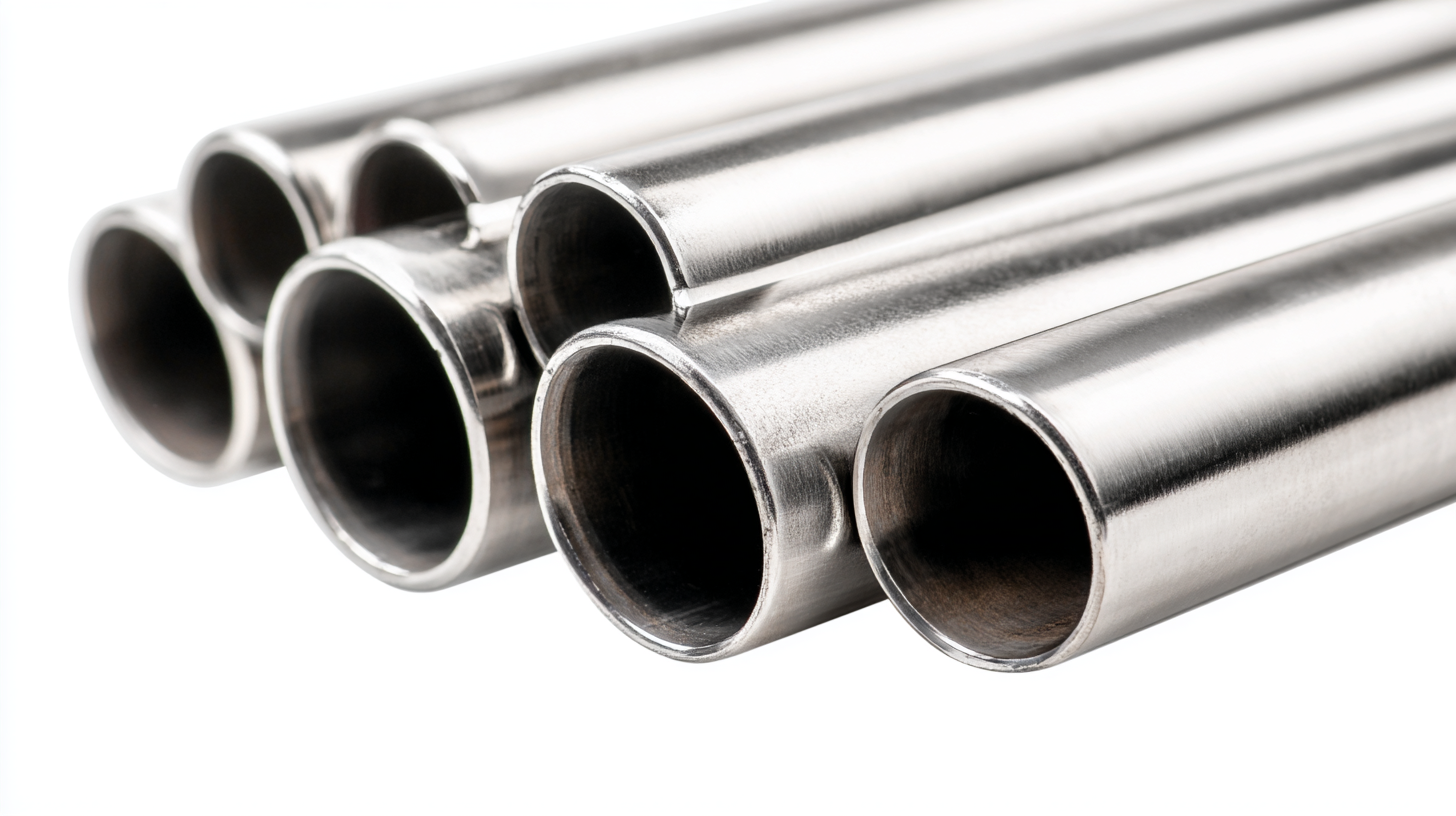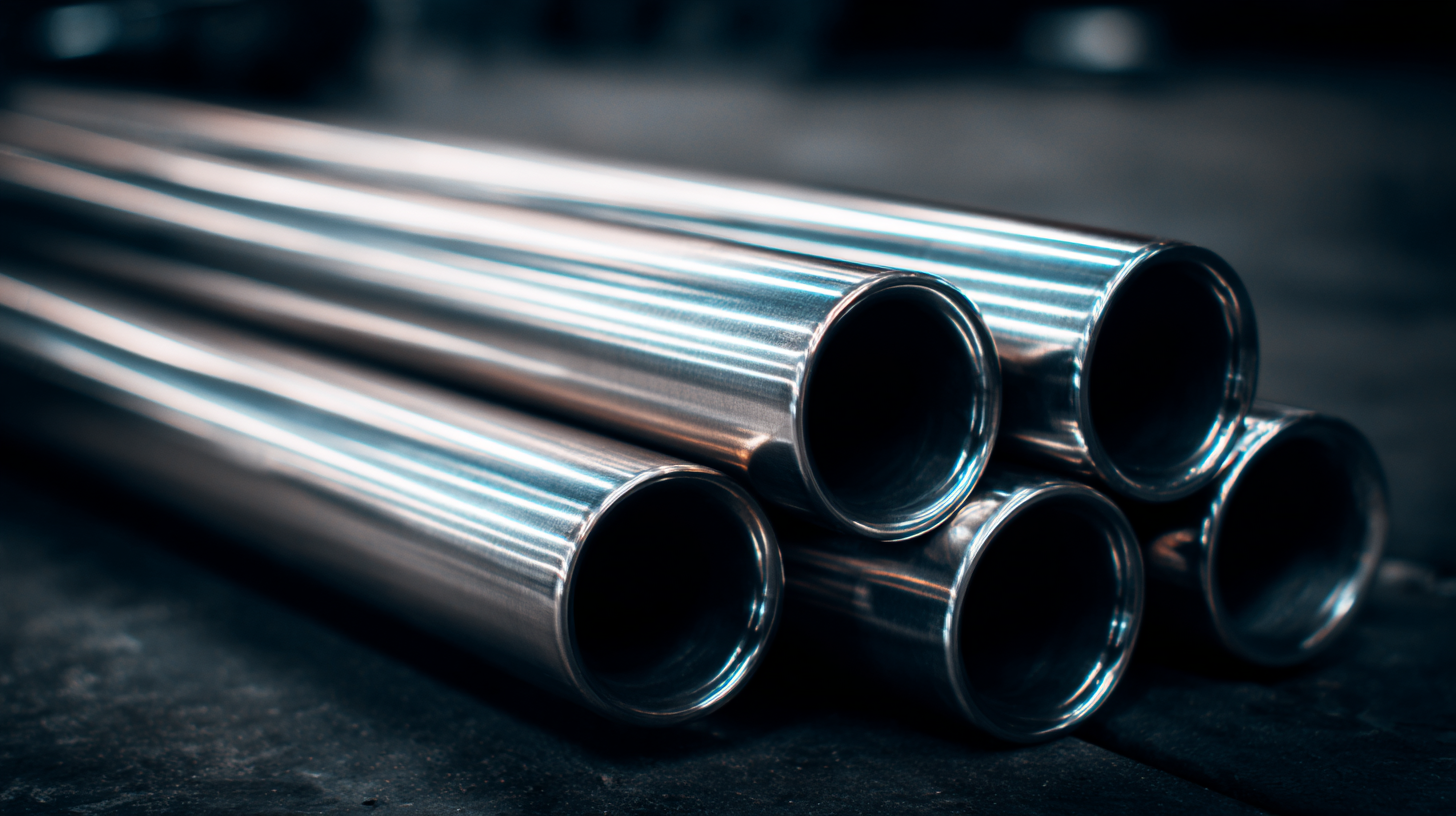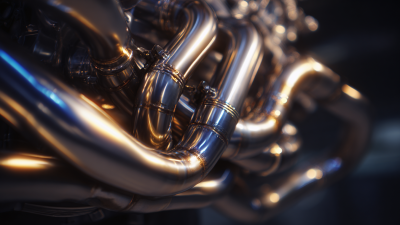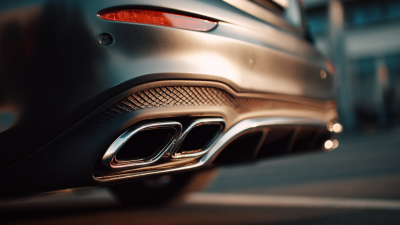2025 Top 5 Stainless Steel Exhaust Tubing Options for Ultimate Performance and Durability
In the world of automotive performance, the choice of
exhaust tubing material plays a crucial role in optimizing vehicle efficiency and durability. Among the available options,
Stainless Steel Exhaust Tubing stands out as a preferred choice for both enthusiasts and professionals alike. According to a
recent report by the Specialty Equipment Market Association (SEMA), approximately
67% of performance upgrades in the automotive aftermarket involve enhancements to the exhaust system, underscoring the importance of selecting high-quality materials.

Stainless steel, known for its exceptional resistance to corrosion and heat, provides a significant advantage over traditional mild steel options.
Research indicates that exhaust systems made from stainless steel can offer a lifespan that is up to three times longer than their counterparts, making them not only a performance-enhancing choice but also a cost-effective investment in the long run.
With advancements in manufacturing techniques and material science, newer forms of stainless steel tubing are being developed to further enhance performance metrics, such as reduced backpressure and improved flow dynamics.
As the automotive industry continues to evolve, exploring the top stainless steel exhaust tubing options is essential for achieving
ultimate performance and durability in modern vehicles. In this article, we will delve into the top five options available in 2025, examining their distinct features, benefits, and applications in the pursuit of superior automotive performance.
Understanding Stainless Steel Exhaust Tubing Types for Optimal Performance
 When considering stainless steel exhaust tubing for automotive applications, understanding the various types available is crucial for optimizing performance and durability. The most common grades are 409, 304, and 316 stainless steel. Grade 409, while cost-effective and resistant to corrosion, is often used in lower-end exhaust systems due to its moderate durability under high temperatures. On the other hand, 304 grade stainless steel is popular for its excellent corrosion resistance and ability to withstand extreme heat, making it suitable for performance exhaust applications.
When considering stainless steel exhaust tubing for automotive applications, understanding the various types available is crucial for optimizing performance and durability. The most common grades are 409, 304, and 316 stainless steel. Grade 409, while cost-effective and resistant to corrosion, is often used in lower-end exhaust systems due to its moderate durability under high temperatures. On the other hand, 304 grade stainless steel is popular for its excellent corrosion resistance and ability to withstand extreme heat, making it suitable for performance exhaust applications.
For those seeking the ultimate in toughness and resistance to harsh environments, 316 grade stainless steel stands out. This material is fortified with molybdenum, offering superior resistance to chlorides and salt, which makes it ideal for vehicles frequently exposed to coastal or aggressive climates. Each of these grades presents distinct advantages, and selecting the right type of stainless steel exhaust tubing can greatly enhance a vehicle's overall performance and lifespan. Understanding these options allows enthusiasts and professionals alike to make informed decisions that cater to specific driving conditions and performance goals.
Key Features to Look for in High-Quality Exhaust Tubing
When selecting high-quality stainless steel exhaust tubing, several key features are critical to ensuring optimal performance and durability. Firstly, the grade of stainless steel used plays a significant role. Generally, 304 stainless steel is the most preferred option due to its excellent resistance to oxidation and corrosion, making it suitable for high-temperature environments typical in exhaust systems. Additionally, considering the tubing’s thickness is vital; thicker walls help withstand the physical stresses and vibrations generated during operation, resulting in a longer lifespan.
Another essential feature to look for is the tubing's design and manufacturing quality. Smooth bends and inner surfaces help maintain optimal exhaust flow, reducing back pressure and improving overall engine performance. Moreover, looking for mandrel-bent tubing can prevent restrictions in airflow, allowing for enhanced vehicle efficiency. Furthermore, suitable welding techniques, such as TIG welding, contribute to structural integrity, helping to avoid weaknesses that can lead to cracks or leaks. By focusing on these key aspects, one can ensure they choose the best stainless steel exhaust tubing for their performance needs.
2025 Top 5 Stainless Steel Exhaust Tubing Options for Ultimate Performance and Durability
This chart presents the performance ratings of the top 5 stainless steel exhaust tubing options for 2025, showcasing their durability and effectiveness in automotive applications.
Comparative Analysis of Popular Stainless Steel Exhaust Tubing Options
In the quest for peak vehicle performance and longevity, stainless steel exhaust tubing options have emerged as frontrunners due to their superior strength and resistance to corrosion. A comparative analysis of popular options reveals significant variations in durability, weight, and price, which are crucial for automotive enthusiasts and professionals alike. Key factors influencing the effectiveness of these tubing choices include not just their engineering and design features but also the manufacturing processes that impact the environmental footprint and health implications associated with steel production.
Recent studies on pollutants control measures applied in the steel industry highlight the urgent need to address environmental concerns as we explore new materials for automotive applications. Understanding the emissions and their implications can guide consumers towards making informed decisions that prioritize both performance and sustainability. As automotive technologies evolve, evaluating prospective exhaust tubing options through the lens of environmental responsibility will likely play a vital role in shaping the future of automotive performance parts, ensuring they not only enhance vehicle efficiency but also contribute to a healthier planet.

Installation Tips for Maximizing the Effectiveness of Exhaust Tubing
When it comes to installing stainless steel exhaust tubing, proper preparation and technique are crucial for maximizing performance and durability. Begin by ensuring you have the right tools and materials, including high-quality stainless steel tubing, clamps, and adapters tailored to your vehicle's specifications. A secure and precise fit will not only enhance the exhaust flow but also prevent any leaks that could diminish performance. Carefully measure and cut the tubing utilizing a pipe cutter to achieve clean edges, reducing the risk of rust over time.
Another key aspect of installation is to position the exhaust tubing correctly to avoid unnecessary bends and kinks. Straight sections will facilitate smoother airflow, improving overall engine efficiency. Additionally, when connecting different components, use stainless steel clamps to secure the connections tightly without damaging the pipes. It’s essential to start with the main exhaust section and work towards the tailpipe, ensuring each connection is tight and secure. Finally, consider adding heat-resistant insulation to further protect the tubing from extreme temperatures, which enhances its longevity and prevents premature wear.
Maintenance Best Practices to Enhance the Longevity of Exhaust Systems
Regular maintenance is key to enhancing the longevity of exhaust systems, particularly those made from stainless steel. These components are often subjected to extreme temperatures and corrosive elements that can lead to wear over time. To ensure optimal performance, regular inspections should be conducted to identify any signs of rust, cracks, or leaks. Cleaning the exhaust tips and pipes not only enhances appearance but also prevents build-up that could impact airflow and efficiency.
**Tips for Maintenance:**
1. **Inspect Regularly:** Schedule routine checks at least twice a year, especially before long trips or seasonal changes.
2. **Clean the System:** Use a non-abrasive cleaner to wipe down the exhaust parts, preventing carbon deposits from forming.
3. **Secure Connections:** Ensure all clamps and hangers are tight, as loose fittings can lead to vibrations that may damage the exhaust system.
By following these practices, vehicle owners can significantly extend the lifespan and performance of their stainless steel exhaust systems. Proper care is essential to avoid costly repairs and ensure a smooth and efficient driving experience.
2025 Top 5 Stainless Steel Exhaust Tubing Options for Ultimate Performance and Durability
| Exhaust Tubing Option |
Material Grade |
Diameter (inches) |
Weight (lbs/ft) |
Corrosion Resistance |
Temperature Resistance (°F) |
| 304 Stainless Steel |
AISI 304 |
2.5 |
0.18 |
Excellent |
1500 |
| 409 Stainless Steel |
AISI 409 |
3.0 |
0.20 |
Good |
1200 |
| 316 Stainless Steel |
AISI 316 |
2.75 |
0.19 |
Excellent |
1650 |
| T304 Stainless Steel |
T304 |
2.0 |
0.17 |
Very Good |
1450 |
| Stainless Steel – Mild Steel Combo |
Custom Alloy |
3.5 |
0.25 |
Moderate |
1300 |
Maintenance Best Practices to Enhance the Longevity of Exhaust Systems
- Regularly inspect for leaks and damage.
- Keep the exhaust system clean from debris.
- Use high-quality materials for repairs.
- Ensure proper installation to avoid stress on joints.
- Consider heat shields to reduce exposure to high temperatures.
 +86 17870576410
+86 17870576410

Home
Company Profile
Products
News
Blog
Contact Us
 Contact Number
Contact Number
 When considering stainless steel exhaust tubing for automotive applications, understanding the various types available is crucial for optimizing performance and durability. The most common grades are
When considering stainless steel exhaust tubing for automotive applications, understanding the various types available is crucial for optimizing performance and durability. The most common grades are 





